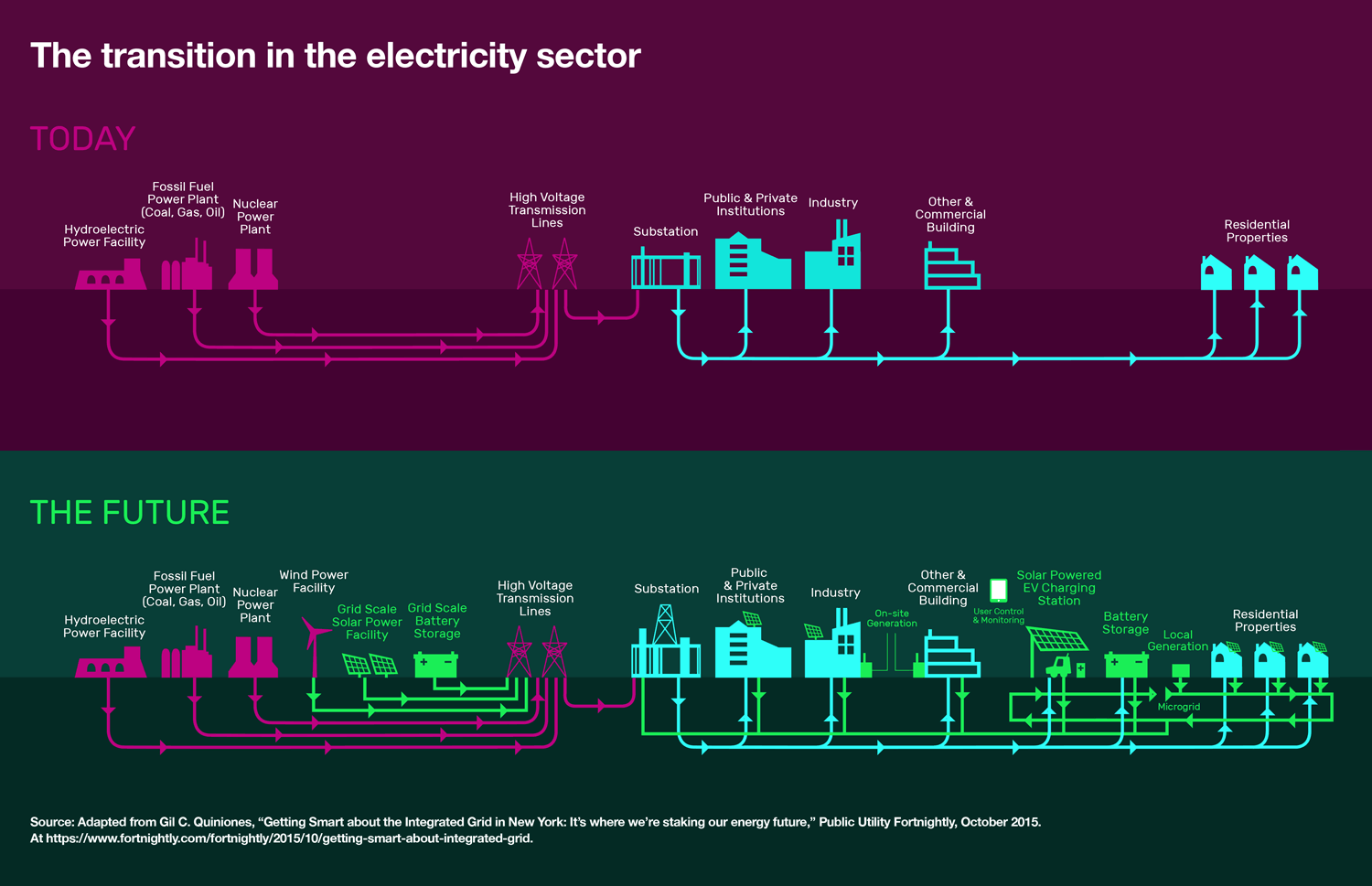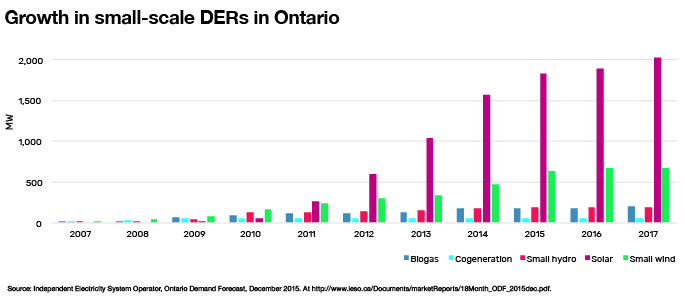February 14, 2017
Technology is disrupting many economic sectors, from transportation to media – and the energy sector is not immune. Most energy consumers have traditionally been passive consumers: they took whatever energy the utility provided them through the wire or the pipe, and their only actual interaction with utility was paying the bill.
Source: Adapted from Gil C. Quiniones, “Getting Smart about the Integrated Grid in New York: It’s where we’re staking our energy future,” Public Utility Fortnightly, October 2015. At https://www.fortnightly.com/fortnightly/2015/10/getting-smart-about-integrated-grid.
These technologies – small-scale generation, storage, energy efficiency and smart demand response – are collectively referred to as distributed energy resources (DERs). They are called distributed because they are generally small scale and numerous, located (“distributed”) across the energy system at consumers’ premises rather than at a central location, such as large centralized power plants.
While this is a growing opportunity that an increasing number of active consumers are taking advantage of, it is unlikely that all consumers will want to participate. Many consumers will likely want to remain passive, expecting to continue to receive energy services as they always have. And from a system perspective, this creates a complex reality that requires prudent management that strikes a careful balance between different consumers. The impact of DERs on both passive and active consumers will therefore depend on how effectively – that is, how equitably – DERs are integrated into the system.
Source: Independent Electricity System Operator, Ontario Demand Forecast, December 2015. At http://www.ieso.ca/Documents/marketReports/18Month_ODF_2015dec.pdf. Note: 2016 and 2017 are projections.
The danger is that electricity costs would rise for consumers. That may sound counter intuitive – if more people use less energy, or use energy when it costs less to produce, shouldn’t that mean lower costs?
The problem is that in reality most of the energy system’s costs are set for years to come. For example, some costs derive from long-term commitments to buy energy at a fixed rate, promised to producers to create cost certainty or encourage the development or adoption of more diverse energy sources. In other cases, repayments for costly upfront investments made to increase, upgrade, or add necessary transmission or distribution infrastructure have been spread over many years.
If DERs are effectively and equitably integrated into the energy system, everyone can benefit.
These costs, and electricity rates (which are based in part on those costs), are committed to utilities and generators based on projected levels of usage by different consumers. Therefore if some consumers use less, or even leave the system altogether to produce their own energy, all remaining consumers have to make up the difference with regard to these fixed costs.
But if DERs are effectively and equitably integrated into the energy system, everyone can benefit. Integrating DERs could reduce costs by ensuring that needed energy services are provided in the most efficient way possible. For example, in dense urban areas where demand is high and current transmission capacity is being maxed out, DERs could increase available energy capacity or decrease demand, obviating the need for very costly new infrastructure, for example a new transmission station. In remote rural areas where service extended from the main grid is very expensive to build and maintain, DERs could prove a cheaper way to produce and distribute needed energy more locally. Effectively integrated DERs could also allow for a greater role for renewable energy, reducing emissions.
This means that integrating DER will require utilities and the government to change the way energy is planned and managed in Ontario. The one-size-fits-all approach to energy no longer works, and flexible solutions for communities and consumers will need to be considered.
In a recent Mowat Energy research project, Emerging Energy Trends, we identified four key areas that need to be considered in order to effectively integrate DERs into Ontario’s energy system:
- Improve regional and local energy planning to ensure that the most efficient way to provide energy services to communities is identified. This will require the collaboration of utilities, the energy sector as whole, municipalities, residents and businesses.
- New competitive companies are likely to become important DER players. The role of regulated utilities in the future competitive environment will need to be considered.
- DER development should be based on an economic evaluation, considering all costs and benefits. At the same time, a level playing field for DERs to compete against existing technologies needs to be guaranteed, and the market should consider the different services offered.
- Long-established key principles for setting electricity rates, and in particular principles of equity across consumers within a given utility’s franchise area, business viability and a stable business environment for regulated utilities, and the obligation of regulators to strive to reduce rates for consumers as much as feasible, have to be safeguarded.

Emerging Energy Trends is a comprehensive study of how technological and consumer disruptions in the energy sector could affect Ontario and beyond.
To the Emerging Energy Trends pageMore related to this topic
Authors
Richard Carlson
Reuven Shlozberg
Release Date
Feb 14, 2017









